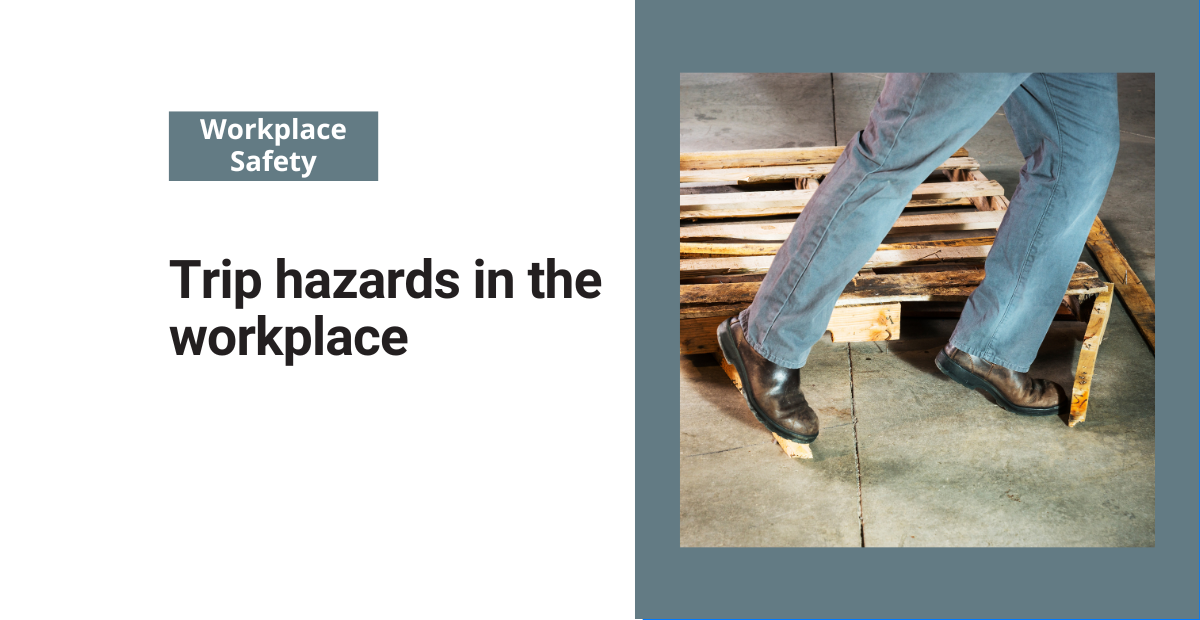Although they are perhaps less dramatic than some of the other risk factors frontline workers face, trip hazards are no less of a threat. In fact, they are some of the most common workplace dangers out there.
According to the Bureau of Labor Statistics (BLS), many trips that don’t result in a fall lead to injuries. In 2020, there were 15,930 recorded trips that did not end with a fall but still caused an employee to miss work.
These types of nonfatal injuries cost companies millions of dollars each year. But they’re preventable. Reduce the prevalence of trip hazards in your facility by auditing often and following these best practices.
Common trip hazards
Compared to other workplace hazards, trip hazards are relatively easy to spot. So, you might wonder why they’re so common. The reason is because many trip hazards blend in with the operation. They come from standard objects and areas that most people overlook.
If your facility has been running for a while, you might not notice many hazards during your safety walks. The longer a hazard exists without being addressed, the more commonplace it will seem. The key is to fix issues as soon as you see them.
Some of the most common trip hazards include:
- Loose cords and cables
- Unmanaged clutter
- Missing handrails
- Unsecured floor mats, tiles, or carpeting
- Poor lighting
- Uneven walkways
- Open cabinets and doors
- Incorrectly laced shoes or boots
The biggest source of these issues is lackluster housekeeping and hazard management. While it might be easy to blame those problems on the cleaning staff, this would be incorrect.
In most cases, trip hazards come from daily operations. And they are often the result of careless and mindless activity. Safety leaders, operations managers, frontline workers, and any other people who are directly involved in the operation have a responsibility to find, eliminate, and prevent trip hazards.
Best practices for eliminating trip hazards
A strong safety culture can help you reduce trip hazards in the workplace. If everyone from the general manager to frontline employees proactively eliminates hazards, your trip incident rate will likely drop.
Implement the following best practices to remove trip hazards, improve your site’s cleanliness, and keep workers safe.
Clean regularly and thoroughly
Cleanliness and safety are closely related. A messy facility is likely to be full of trip hazards. At the very least, you should have a regular cleaning schedule. This should include a dedicated cleaning staff. Depending on the size of your operation, you may need an entire team or just a few workers.
The cleaning schedule should dictate:
- What areas need to be cleaned
- How often areas need to be cleaned
- The person or people responsible for cleaning each area
Audit the execution of this cleaning schedule often to ensure all items are being followed.
Address bad behaviors
A major part of facility safety is individual behavior. If your workers do not keep their workstations clean, there will be many more trip hazards to avoid.
Combat this issue by addressing bad behaviors at once. Letting employees get away with untidiness has several negative effects. It weakens your safety culture. It makes the facility more dangerous. And it hinders productivity.
Aside from cleanliness, it’s also important that workers follow their safety training. Make sure to remind employees not to run in the facility. Also, ensure that employees don’t text and walk at the same time, as this makes them more likely to trip over objects and workstation setups.
Manage the workspace layout
Oftentimes, a hazard cannot be removed. This means that you will have to make the workspace safer by reorganizing it. When performing a safety walk, look for issues with 5S. Note which areas are prone to collect clutter. Is there a better way to store the clutter? Consider adding a pallet drop zone, organizational bins, or storage racks to keep the area clear. Once you’ve implemented the change, don’t forget to update the floor 5S to match.
Track action items
Have you ever seen a trip hazard one day, fixed it, and then seen it again the very next day? This is a sign that you need more effective action items.
For example, if you see a broom on the floor, it is easy to simply pick it up and put it where it goes. But if it keeps ending up in the same place, you need to consider that the storage area might not be effective. Try moving the storage location to a more convenient area. This may prevent the hazard from resurfacing on a regular basis.
This same approach works for loose rugs and mats. Certain rugs simply don’t stay put. Every time it rains, employees come into the facility only to trip dramatically in the front entrance. When this keeps happening, you should try a different type of rug or mat.
Whenever you implement these types of changes, document them. Make sure to log action items for each safety walk and process hazard analysis. If you input the same hazard in a future audit, come up with a new action item. Doing this allows you to keep a detailed log of all your solutions. That way, if a recordable trip injury occurs, you have a demonstrated history of trying to address the issue.
Other posts you might like…
No posts
